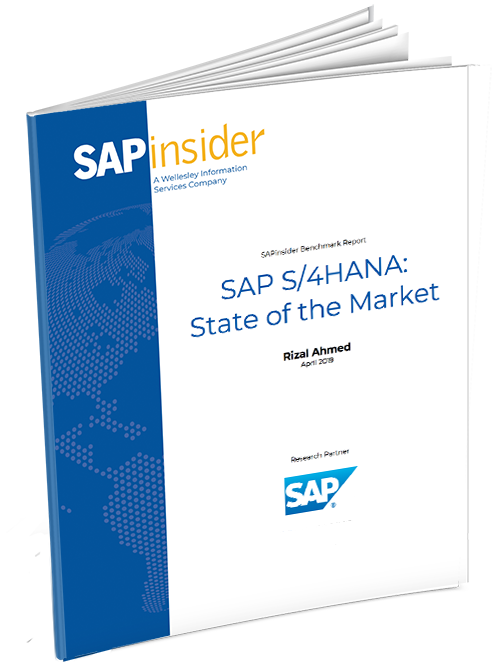Essential Steps for a SAP S/4HANA Migration
The successful implementation of an innovative ERP system marks the crucial initial stride that companies must take toward adopting circular models. By integrating diverse business processes and functions into a unified platform, this ERP solution streamlines communication and data flow across various departments, fostering enhanced coordination and informed decision-making.
Certified ERP platforms go even further by guaranteeing seamless connectivity, communication, and certified data exchange among all stakeholders within the organization’s value chain. This includes suppliers, customers, partners, producers, and distributors. Such a comprehensive approach ensures a cohesive and interconnected network, facilitating collaboration and efficiency throughout the entire ecosystem.
By leveraging certified data exchange and improved coordination among stakeholders, organizations can achieve greater transparency, traceability, and accountability in their operations.
With its advanced capabilities and real-time analytics powered by the SAP HANA in-memory database, SAP S/4HANA enables businesses to gain deep insights into their operations, resource utilization, and customer demands. This data-driven approach helps organizations optimize processes, minimize waste, and make informed decisions to create more sustainable and circular business practices. By integrating various functionalities, including supply chain management, predictive analytics, and product lifecycle management, SAP S/4HANA empowers companies to adopt circular economy principles, leading to improved resource efficiency, reduced environmental impact, and increased opportunities for product reuse and recycling.

Migration to SAP S/4HANA is a strategic choice of value for all businesses seeking to leverage process innovation and digital technologies to create a more agile and intelligent business. The power of the in-memory database SAP HANA, upon which the next-generation ERP SAP S/4HANA and the entire SAP ecosystem are built, enables superior performance and reliability compared to traditional architectures. Moreover, it guarantees greater efficiency and speed, especially in advanced data collection and analysis activities, which are essential for any organization aiming to transform into an intelligent enterprise.
SAP S/4HANA has been at the core of the global strategy of the business digitization solutions specialist in recent years, and most new versions of SAP products are part of a modular platform based on this technology. This is why more and more companies are accelerating their migration processes to SAP S/4HANA from their current databases.
However, it’s essential to note that the benefits of the new environment can be fully realized only when the migration to SAP S/4HANA is approached with consideration of all the necessary requirements for what, on paper and in reality, is much more than a simple upgrade: it is a significant technological evolution.

We outlined some of the methodologies, procedures, and precautions an organization must consider for a successful migration to SAP S/4HANA.
1. Evaluate the Business Processes
Migration can lead to incompatibilities between the new environment and the existing application landscape, disrupting some processes, especially those relying on legacy solutions. Therefore, it is essential to monitor and study the business processes to identify which ones are indeed in use, which are not, and most importantly, which ones will be genuinely required after migrating to SAP S/4HANA.
In other words, all business processes must be analyzed, and it should be determined which should be migrated “as is,” which need to be modified or updated as part of the migration, and which ones are better left unmigrated because they are no longer necessary or can continue to work with the legacy database.
The migration project team should involve users and business experts in the evaluation process to mitigate the risk of damaging critical business processes. Promoting proactive communication of requirements and providing helpful suggestions are crucial to minimizing any temporary loss of productivity during and after the migration.
2. Contextualize Migrating to SAP S/4HANA within the Broader Ecosystem
Typically, SAP solutions in a company form part of an extensive interconnected system with other systems. An integration error due to inadequate controls on peripheral applications can have repercussions on workloads and, in turn, critical functions of the organization.
Therefore, migration assessments and tests should cover the entire IT environment: not only SAP systems but also those reserved for vertical business divisions and all productivity platforms connected to the ecosystem.
To conduct effective tests, automation saves time, energy, and resources. Robotic Process Automation (RPA) simulates various interfaces of the application program can be simulated and performs interaction with the technologies and protocols comprising different layers of the environment.. This enables the identification of issues in advance and suitable solutions before migrating.
3. Methodical Migration
As with any large-scale software project, it’s easy to underestimate the amount of work required to implement all functions correctly during the migration to SAP S/4HANA. Therefore, it’s better to avoid a big-bang approach.
Instead, utilizing the DevOps methodology, the system can be divided into easily manageable partitions that can be deployed as soon as possible, enabling the collection of user feedback on their performance before the entire project is completed.
During the migration process to the new system, it is also beneficial to keep the old environment available so that users can continue to access functionalities that have yet to be migrated to the new platform. This can minimize the impact on the business during the delicate transition phases.

In summary, the adoption of an innovative ERP system represents a crucial step towards circular models, optimizing processes and enhancing communication. Certified ERP platforms ensure uninterrupted connectivity among stakeholders, promoting collaboration and efficiency. Real-time analytics from SAP S/4HANA empower sustainable practices, optimizing operations and decisions. A methodical approach to migration, encompassing process evaluation, ecosystem integration, and phased implementation, is essential for success.




